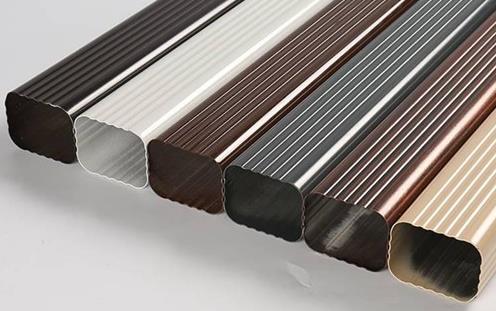Aluminum alloy is made of pure aluminum by adding some alloying elements, such as aluminum-manganese alloy, aluminum-copper alloy, aluminum-copper-magnesium hard aluminum alloy, and aluminum-zinc-magnesium-copper super-hard aluminum alloy. Aluminum alloy has better physical and mechanical properties than pure aluminum: easy processing, high durability, wide application range, good decorative effect, and rich color.
Aluminum alloy is the most widely used non-ferrous metal structural material in the industry, and it has been widely used in aviation, aerospace, automobile, machinery manufacturing, shipbuilding and chemical industries. Aluminum alloys are divided into rust-proof aluminum, duralumin, super-duralumin and other types. Each type has its own range of use and has its own code for users to choose from.
Basic knowledge about aluminum alloy
"Alloys" are mixtures of different metal elements, usually created to enhance the strength and durability of materials. Aluminum alloys usually consist of the latter as the main metal in the mixture, depending on the desired application, and are usually combined with other elements (such as silicon, tin, manganese, and even copper, tin, and magnesium). With the right combination of elements, aluminum can achieve higher strength, and in some cases, aluminum may even outperform steel. The alloy has the same advantages as pure aluminum, and because of its lower melting point, it is also cost-effective.
An alloy based on aluminum with many other alloying elements is one of the light metal materials. In addition to the general characteristics of aluminum, aluminum alloys also have specific characteristics of alloys due to the different types and quantities of added alloying elements. The density of aluminum alloy is 2.63~2.85g/cm, high strength (σb is 110~650MPa), specific strength is close to high alloy steel; specific stiffness is higher than steel, good casting performance and plastic processing performance, good electrical conductivity, Thermal conductivity, good corrosion resistance and weldability, can be used as structural materials, and has a wide range of applications in aerospace, aviation, transportation, construction, electromechanical, light and daily necessities.

The application of aluminum alloy
Aerospace and automotive
In engineering technology, the construction of light-weight parts and corrosion-resistant metal parts, you will often find aluminum alloys. The aerospace and automotive industries are highly dependent on aluminum alloys. In this special case, aluminum alloy is becoming more and more important. This is because it can reduce the weight of the vehicle, thereby maximizing its efficiency and fuel sustainability in the long run. In addition, the durability of aluminum alloy also makes it a safety-conscious choice because it performs well in crash tests and exceeds the requirements of most safety regulations in the world. Aluminum is much lighter than steel (approximately one-third of its weight), and it enables manufacturers to make strong metal parts without adding unnecessary weight to reduce vehicle performance.
Building
High-strength aluminum alloy is also a very popular tool in building structures. Steel is still one of the most basic materials in construction, but the aluminum alloy is definitely behind the second place. When constructing modern skyscrapers and structures, it is important to consider strength and safety. The high corrosion resistance and low flammability, as well as the additional benefits of aluminum's natural insulating properties, make it an ideal choice. In recent years, aluminum has been highly praised internationally in buildings that may cause fires. Compared with the steel of similar quality, the heat required to raise the temperature of aluminum by one degree is about twice that. In addition, aluminum does not burn in the air, nor does it cause smoke and other toxic fumes.
Electrical and Electronic Engineering
Since aluminum does not cause any electromagnetic interference, aluminum is often found in electrical and electronic engineering applications. Unlike other metals, aluminum is actually non-ferromagnetic, so it is very important and very important for electronic manufacturing, electrical shielding and other applications.
Other application
In addition to being very strong, aluminum alloys (especially those containing magnesium) are less flammable and less prone to corrosion than other alloys. For each given application, choosing the best aluminum alloy is very important, taking into account factors such as ductility, density, ductility, and tensile strength.
Not surprisingly, major agencies such as NASA and several militaries around the world have trust in aluminum alloys in many important applications. If this is not enough to prove the strong strength of aluminum, then there is another option for you: a shark cage!
Sharks are the oldest and deadliest killing machine on the planet. Their bite force is enough to break the bones of whales and tear them through human limbs like a hot knife through melted butter. However, they cannot pass through the aluminum alloy cage! Seawater is highly corrosive to metals due to its acid content and salinity. However, as mentioned earlier, aluminum is very resistant to corrosion. In addition, it has good buoyancy, which means it will feel lighter in the water.


